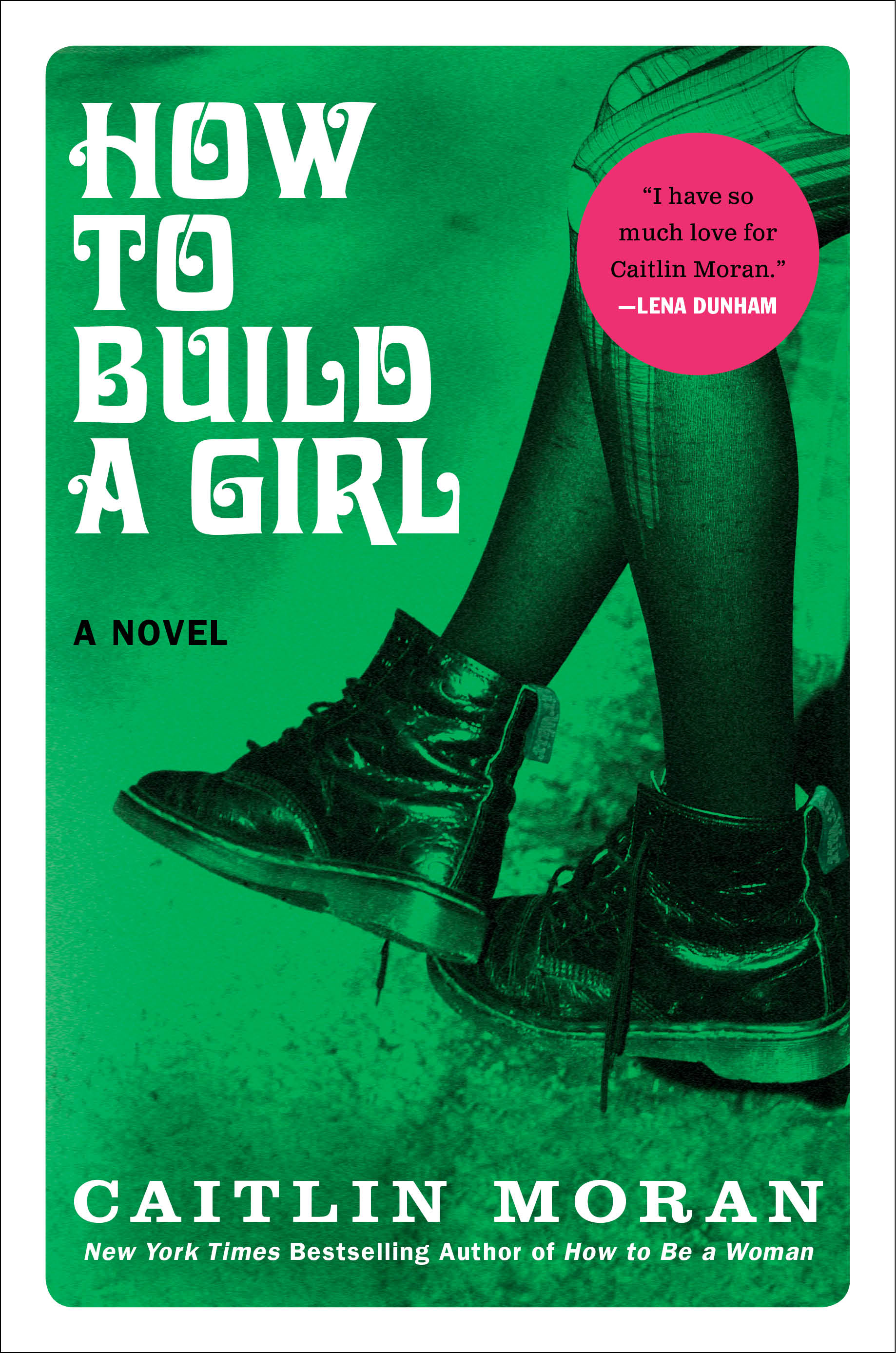
Most of America first encountered Caitlin Moran in 2011 when she explained How To Be a Woman with her best-selling memoir/polemic. The deeply personal book served as a call to arms for modern feminism, skipping academic jargon in favor of discussing pubic hair and sex work, with plenty of jokes in between; Woman became an international best-seller and put Moran on the map as one of the new feminist icons.
In her first novel How To Build a Girl, Moran takes her trademark humor and applies it to a new subject: adolescence. Moran’s protagonist is Johanna Morrigan, a 14-year-old girl circa 1990, living in a provincial English town called Wolverhampton, which “looks like something bad happened to it.” A bright, overweight optimist, obsessed with sex and yearning “to be beautiful,” Johanna dreams of becoming a writer while living with her large, eccentric family in public housing. Terrified that her father’s disability benefits will soon end, Johanna decides to save her family from poverty by becoming a music journalist in London.
Anyone already familiar with Moran will immediately recognize the broad outlines of the story: she also lived in public housing with her large family in Wolverhampton in the ‘90s, before becoming a teenage music journalist for the British publication Melody Maker and then going on to work for the Times. Moran insists, however, that it’s a work of fiction, autobiographically inspired as it may be.
The smartest thing about the universe of Moran’s Girl is that growing up isn’t a passive activity, a thing that happens to you. Instead, it’s something you deliberately set out to achieve for yourself, building up piece by piece and constructing who you are with books, pop music and wild experiences. For Johanna, it also involves sex, drugs and lots of rock ‘n’ roll. She tries on different identities, such as “Dolly Wilde” — her rock critic nom de plume — and suffers various humiliations and disappointments along the way.
There’s a lot going on and, unsurprisingly — given that it was written by Moran — How To Build a Girl is very funny. It’s also quite rude. A considerable portion of the book focuses on the various household items that Johanna can use to masturbate with. (Book banning types in the U.S. are bound to have a field day with this one.)
But there are also some observations that aren’t believable coming from a 14-year-old — or even, as Johanna ages throughout the book, a 16 or 17-year-old. Her insights are either too mature or much too naïve. Though Johanna can be reflective on class, music and sexual frustration, most of her feelings regarding her family, her colleagues or even some of her experiences are left largely unexplored. While charming and funny, she is often disappointingly glib, breezing over events in her own mind in a way that feels unrealistic.
Johanna often approaches new experiences as a complete innocent, before her future self interrupts in order to editorialize what she’s experiencing. In one notable scene, after Johanna has a rash of unsatisfying sexual encounters and finds herself in bed with a man whose pleasure is the only thing she focuses on, she notes: “In later years I find this is called ‘physical disconnect,’ and is all part and parcel of women having their sexuality mediated through men’s gaze.” Sure, it’s an accurate description of what’s going on, but it’s not one that teenage Johanna would ever articulate. It’s passages like that which make Girl feel less like a novel and more like a collection of deleted scenes from Moran’s first book.
With How To Be a Woman – a hugely lovable book, even when it was problematically narrow – Moran had swaths of women snapping it up, laughing and saying, “Yes, this is what it is like to be a woman.” While How To Build a Girl will almost certainly make readers laugh, it’s hard to imagine anyone recognizing the adolescence it depicts. That said, many readers will recognize plenty of Moran in it. For her fans, that’s probably all that’s needed.
More Must-Reads From TIME
- The 100 Most Influential People of 2024
- The Revolution of Yulia Navalnaya
- 6 Compliments That Land Every Time
- Stop Looking for Your Forever Home
- If You're Dating Right Now , You're Brave: Column
- The AI That Could Heal a Divided Internet
- Fallout Is a Brilliant Model for the Future of Video Game Adaptations
- Want Weekly Recs on What to Watch, Read, and More? Sign Up for Worth Your Time
Contact us at letters@time.com